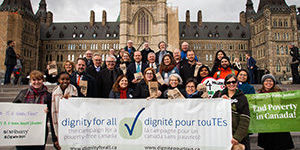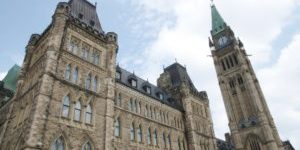Can you imagine escaping a dangerous situation and finally beginning a new life in Canada… but doing so with $10,000 in debt, before you’ve even started language classes or enrolled your children in school? For more than two decades, Canada was the only country in the world to charge refugees interest on their travel loans. For a nation claiming to welcome refugees, this sent mixed messages.
For years, many organizations like Citizens for Public Justice have called for amendments to the Immigration Loans Program (ILP), which helps new immigrants and refugees cover costs associated with their move to Canada. Repaying these loans has often made it difficult for refugees to settle in Canada. Since they are rushed to pay off this debt, it can limit their access to language training and other settlement supports. In some cases, refugees have even foregone basic necessities like food.
That’s why we were glad to see changes to the loan program this past February. Now, refugees will not need to start repaying the loan until one year after their arrival, as compared to just 30 days under the old policy. The federal government has also extended the repayment period, removed interest charges on future loans, and halted any further accumulation of interest on outstanding loans. This is great news!
These steps are commendable and reflect a move towards resettlement policy better focused on the well-being of refugees in Canada.
But despite these important steps, a problem persists: the fact that refugees must repay them at all. Inevitably, this will continue to leave many newcomers with significant debt upon arrival to Canada. For people who are already vulnerable to poverty, that’s a problem. (CPJ’s 2017 Poverty Trends report showed that new immigrants and refugees experience poverty at a rate of 31.4 per cent, compared to 13.9 per cent in Canada overall.)
According to Dignity for All, there are a number of reasons that it can be difficult for refugees to become financially stable. The biggest barrier they identified was the problem of travel loan repayment.
The report profiled the Dulaimi family, who received a travel loan of $10,000. Under the previous loan structure, the family fell short of paying their bills each month by $140.10. Under the new and improved policy, the family’s monthly shortfall would still stand at $86.01. With the extended timeline, this monthly deficit would be felt over an 8-year period. Comparatively, if they didn’t have to repay their travel loan, they would be able to save a little, with a monthly surplus of $18.16.
The decision to halt interest charges is a commendable one, but the loans themselves are still a considerable obstacle to making ends meet. If refugee poverty and successful refugee resettlement is to be taken seriously, travel loan repayment must be phased out altogether.
Not only is this the right thing to do, it’s also cost effective. According to The Government of Canada’s 2015 evaluation of the travel loan program, an average of just over $12.7 million is issued in loans annually. To absorb these expenses, it would cost each person in Canada no more than 40 cents per year.
If we cancelled these loans, immigrants and refugees would be better able to pursue language training, acquire Canadian credentials, and find jobs. And it would help them to settle into their new lives in Canada faster.
We’re celebrating the cancellation of interest charges and other changes to the loan program. Still, to truly bring refugee policy in line with existing challenges, the government should fully waive travel loan repayment for all refugees.
Ask Parliament to End Refugee Travel Loan Repayment
Photo Credit: Flickr/Fotomovimiento.




